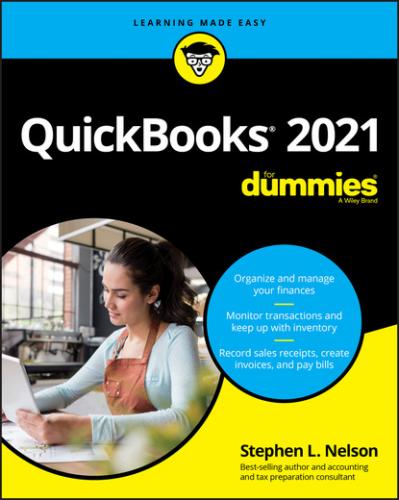Just for fun, I created the sample trial balance shown in Table 2-1. This table shows you what a trial balance looks like if you convert at some time other than at the beginning of the accounting year.
TABLE 2-1 A “Slightly Awkward Way” Sample Trial Balance
| Trial Balance Information | Debit | Credit |
|---|---|---|
| Assets | ||
| Checking | $5,000 | |
| Fixed assets | $60,000 | |
| Accumulated depreciation (fixed assets) | $2,000 | |
| Liabilities information | ||
| Loan payable | $10,000 | |
| Owner’s equity and income statement information | ||
| Opening balance equity | $20,000 | |
| Sales | $60,000 | |
| Cost of goods sold | $20,000 | |
| Supplies expense | $2,100 | |
| Rent expense | $4,900 | |
| Totals | $92,000 | $92,000 |
If you’re converting at the beginning of the accounting year, your trial balance instead looks like the one shown in Table 2-2. Notice that this trial balance doesn’t have any year-to-date income or expense balances.
TABLE 2-2 A “Right Way” Sample Trial Balance
| Trial Balance Information | Debit | Credit |
|---|---|---|
| Assets | ||
| Checking | $5,000 | |
| Fixed assets | $60,000 | |
| Accumulated depreciation (fixed assets) | $2,000 | |
| Liabilities information | ||
| Loan payable | $10,000 | |
| Owner’s equity and income statement information | ||
| Opening balance equity | $53,000 | |
| Totals | $65,000 | $65,000 |
The mother of all scavenger hunts
Even after you decide when you want to convert to QuickBooks and come up with a trial balance, you still need to collect a bunch of additional information. I list these items in laundry-list fashion. What you want to do is find all this stuff and then pile it up (neatly) in a big stack next to the computer:
Last year’s federal tax return: QuickBooks asks which federal income tax form you use to file your tax return and also asks about your taxpayer identification number. Last year’s federal tax return is the easiest place to find this stuff.
Copies of all your most recent state and federal payroll tax returns: If you prepare payroll for employees, QuickBooks wants to know about the federal and state payroll tax rates that you pay, as well as some other stuff.
Copies of all the unpaid invoices that your customers (or clients or patients or whatever) owe you as of the conversion date: I guess this is probably obvious, but the total accounts receivable balance shown on your trial balance has to match the total of the unpaid customer invoices.ABOUT THOSE DEBITS AND CREDITSDon’t get freaked out about those debits and credits. You just need to keep them straight for a few minutes. Here’s the scoop: For assets and expenses, a debit balance is the same thing as a positive balance. So a cash debit balance of $5,000 means that you have $5,000 in your account, and $20,000 of cost of goods sold means that you incurred $20,000 of costs-of-goods expense. For assets and expenses, a credit balance is the same thing as a negative balance. So if you have a cash balance of –$5,000, your account is overdrawn by $5,000. In the sample trial balance shown in Table 2-1, the accumulated depreciation shows a credit balance of $2,000 — which is in effect a negative account balance.For liabilities, owner’s equity accounts, and income accounts, things are flip-flopped. A credit balance is the same thing as a positive balance. So an accounts payable credit balance of $2,000 means that you owe your creditors $2,000. A bank loan credit balance of $10,000 means that you owe the bank $10,000. And a sales account credit balance of $60,000 means that you’ve enjoyed $60,000 worth of sales.I know that I keep saying this, but do remember that those income and expense account balances are year-to-date figures. They exist only if the conversion date occurs after the start of the financial year.
Copies of all unpaid bills that you owe your vendors as of the conversion date: Again, this is probably obvious, but the total accounts payable balance shown on your trial balance needs to match the total of the unpaid vendor bills.
A detailed listing of any inventory items you’re holding for resale: This list should include not only inventory item descriptions and quantities, but also the initial purchase prices and the anticipated sales prices. In other words, if you sell porcelain wombats, and you have 1,200 of these beauties in inventory, you need to know exactly what you paid for them.
Copies of the previous year’s W-2 statements, W-4 statements for anybody you hired since the beginning of the previous year, detailed information about any payroll tax liabilities you owe as of the conversion date, and detailed information about the payroll tax deposits you made since the
